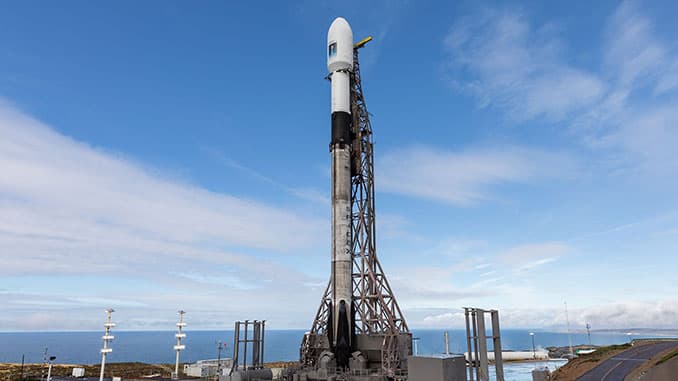SpaceX Falcon 9 Achieves 500th Reused Booster Mission with Sentinel-6B Launch

Vandenberg Space Force Base, California – SpaceX successfully launched the Sentinel-6B ocean-monitoring satellite aboard a Falcon 9 rocket from Vandenberg Space Force Base in California on November 16, at 9:21 p.m. PST. This mission marked a significant milestone for SpaceX, representing the 500th orbital flight utilizing a previously flown Falcon booster. The Falcon 9’s first stage, designated B1097, completed its third flight, returning to land at Landing Zone 4 (LZ-4) at Vandenberg.
The Sentinel-6B satellite, a collaborative effort involving NASA, ESA, EUMETSAT, and NOAA, is designed to continue a decades-long record of precise sea level measurements. It will provide crucial data on ocean topography, wind speeds, wave heights, atmospheric temperature, and humidity, which are vital for improving hurricane forecasts, safeguarding coastal infrastructure, and monitoring climate change. The satellite will orbit Earth at an altitude of 830 miles (1,336 kilometers), taking over from its twin, Sentinel-6 Michael Freilich, launched in 2020.
The achievement of 500 missions with flight-proven Falcon boosters underscores SpaceX's pioneering role in reusable rocket technology. This operational efficiency significantly reduces launch costs and increases the frequency of space missions, transforming access to orbit for both government and commercial payloads. The company's commitment to reusability has been a cornerstone of its strategy, enabling a rapid launch cadence and contributing to the expansion of various space-based services.
Sentinel-6B will initially operate in tandem with Sentinel-6 Michael Freilich for cross-calibration before becoming the primary reference satellite for global sea level measurements. This continuity of data is essential for scientists and policymakers to understand and address the impacts of rising sea levels. The mission highlights the critical importance of international cooperation in Earth observation and climate science.